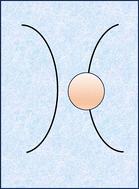The heat distribution of harmonically trapped single particles in active viscoelastic media
IF 2.9
3区 化学
Q3 CHEMISTRY, PHYSICAL
引用次数: 0
Abstract
The present paper is a continuation of efforts spanning several years to better understand the stochastic thermodynamics of small systems. It presents exact calculations of the heat distribution function of two different harmonically confined systems driven by thermal and athermal noise in a viscoelastic medium under overdamped conditions: one, a single particle in one dimension, and the other an elastic dumbbell in three dimensions. The calculations build on work carried out recently by Darabi et al. [New J. Phys. 2023, 25, 103021] and Gomez-Solano [Phys. A, 2024, 646, 129889] on the heat distribution of a Brownian oscillator evolving under the action of non-Markovian memory effects, which in one case originate in viscoelasticity, and in the other in hydrodynamic backflow. The heat distributions calculated in this paper both involve modified Bessel functions, as in earlier studies, but also contain multiplicative exponential factors. These factors reflect the irreversibility induced in the systems by the athermal noise, and lead to their obeying a fluctuation theorem for the heat.

活跃粘弹性介质中单粒子谐波捕获的热分布
本论文是多年来为更好地理解小系统的随机热力学而努力的延续。本文给出了粘弹性介质在过阻尼条件下,由热噪声和非热噪声驱动的两种不同的谐波约束系统的热分布函数的精确计算:一种是一维的单个粒子,另一种是三维的弹性哑铃。这些计算建立在Darabi等人[New J. Phys. 2023,25,103021]和Gomez-Solano [Phys. 2023,25,103021]最近进行的工作的基础上。在非马尔可夫记忆效应作用下演化的布朗振子的热分布,一种情况下起源于粘弹性,另一种情况下起源于流体动力回流。本文计算的热分布既涉及修正贝塞尔函数,如在早期的研究中,但也包含乘法指数因子。这些因素反映了非热噪声在系统中引起的不可逆性,并导致它们服从热涨落定理。
本文章由计算机程序翻译,如有差异,请以英文原文为准。
求助全文
约1分钟内获得全文
求助全文
来源期刊

Physical Chemistry Chemical Physics
化学-物理:原子、分子和化学物理
CiteScore
5.50
自引率
9.10%
发文量
2675
审稿时长
2.0 months
期刊介绍:
Physical Chemistry Chemical Physics (PCCP) is an international journal co-owned by 19 physical chemistry and physics societies from around the world. This journal publishes original, cutting-edge research in physical chemistry, chemical physics and biophysical chemistry. To be suitable for publication in PCCP, articles must include significant innovation and/or insight into physical chemistry; this is the most important criterion that reviewers and Editors will judge against when evaluating submissions.
The journal has a broad scope and welcomes contributions spanning experiment, theory, computation and data science. Topical coverage includes spectroscopy, dynamics, kinetics, statistical mechanics, thermodynamics, electrochemistry, catalysis, surface science, quantum mechanics, quantum computing and machine learning. Interdisciplinary research areas such as polymers and soft matter, materials, nanoscience, energy, surfaces/interfaces, and biophysical chemistry are welcomed if they demonstrate significant innovation and/or insight into physical chemistry. Joined experimental/theoretical studies are particularly appreciated when complementary and based on up-to-date approaches.
 求助内容:
求助内容: 应助结果提醒方式:
应助结果提醒方式:


